White splotches and lines appearing on blue/gray plaster
Our blue/gray plaster is now covered with white spots, splotches, and lines. Asked the pool builder about it and was told it was probably caused by shock not dissolving entirely before settling on the bottom. Problem is, we have never had a need to shock the pool and... the white splotches and spots are on the sides which means we'd have to be pretty talented to get it to settle on the vertical surfaces. Pool builder was supposed to come out and have a look but haven't heard from them (not surprised either). This pool is less than 3 years old. The areas of stains are very smooth like the rest of the plaser and doesn't appear to be any kind of build up. Does anyone have any idea what this might be?
Comments (26)
poolguynj
13 years agoA few pics would help.
To Post a picture here, create a Photobucket account (it's free).
Create your photo album.
Each picture will have 4 available options for posting the image. Copy the 3rd option and paste it directly in the message box, one per line.
You can add white space for adding descriptions of each picture as needed.
Additional Questions:
1) Who takes care of the pool?
2) What is used for testing the water?
3) What is being tested for?Scott
Here is a link that might be useful: Photo Bucket Home Page
Related Professionals
Sudley Swimming Pool Builders · Ballwin Landscape Architects & Landscape Designers · Parole Landscape Architects & Landscape Designers · Anderson Landscape Contractors · Biloxi Landscape Contractors · Framingham Landscape Contractors · Galveston Landscape Contractors · Glendale Heights Landscape Contractors · Metairie Landscape Contractors · Muttontown Landscape Contractors · North Richland Hills Landscape Contractors · Wilton Landscape Contractors · Cedar Falls Decks, Patios & Outdoor Enclosures · Lebanon Decks, Patios & Outdoor Enclosures · Salem Decks, Patios & Outdoor Enclosurespoolguynj
13 years agoWhen they mixed the plaster, did they add the color as it was mixed or was it premixed in the bag? What brand did they use?
This isn't all that uncommon. In fact, I have seen this in the majority of the grey plaster pools in my area. While some are disturbed by it, I like it as it adds a unique character to the pool.
Side note:
I, for one, strongly believe in testing weekly and not relying on a pool store. Some are good, some aren't. I recommend my customers invest in a good kit that includes a DPD-FAS chlorine test such as a Taylor 2006-k or TF100 from TFTestkits.com (better value, no financial interest...), is easy to use, well laid out and accurate.Scott
ncrealestateguy
13 years agoCBintx,
It looks like crap, and is not normal... I know Scott knows a lot about this stuff, but it still looks like crap.texasredhead
13 years agoAre you near a Leslies or other pool supply store? Take in a sample and get a free analysis. If any one ever swims in a pool, it needs shocked. Do you have a test kit of your own? These basically test chlorine levels, pH, acid demand, and total alkalinity. However, most do not test hardness, calcium levels, chlorine stabalizer levels, just to name a few. If I had to guess, I would say the hardness level may be suspect. Soft water will lead to algea build up and spotting. And yes, I do rely on professional water testing.
poolguynj
13 years agoImproper pH and low free chlorine to stabilizer residuals lead to algae, not soft water.
Low calcium levels and low pH yield etching in the plaster. Google Calcium Saturation Index.
The Taylor K2006 tests Alk, pH, Calcium, Free and combined chlorine to 50 ppm and stabilizer. The TF100 does also as I mentioned before.
I think my previous post's questions to the OP are going to tell us more. Lets start there. If cbinTX would also post their latest test results and if performed, a borate result since BioGuard products often add them, it would also be useful.
Scott
diypoolpro
13 years agoI am out of retirement again for a moment and thought I would offer my opinion on this problem. First, the warranty on your plaster is most likely 1 year so this is probably not a warranty issue. Secondly, these blue/gray plaster interiors do not provide much of any forgiveness overtime for conditions originating from calcium carbonation or the precipation of calcium hydroxide to the surface. Plaster is a cementitous product and can overtime cause this type of visible reaction on the surface of these darker colored interiors. What you are seeing here is some of the microporing and microcracking that occurs just after application of the plaster as it begins to immediately cure. These microcracks are quickly closed up as the pool is filled with water (hydration) and are not visible by the naked eye. However, these microcracks can reappear this way when water chemistries are not maintained. This is not considered a defect in the material but more of a consequence of improper maintenance. Usually the damage only extends a few millimeters into the substrate depending on the time the surface was exposed to poor water chemistry. A light acid wash of this area may help to remove only the topmost few millimeters of the substrate and reveal a more satisfactory underlying layer.
Rack Etear
13 years agoYup as he said, it's never a fault of the plasterers, the mix, the application method, the improper dissolving of calcium.
It always has to be the chemistry.
But seriously, I have seen pools poorly maintained that look incredible; ones that are meticulously maintained look like crap.
While I will always advocate maintaining proper chemistry, many plaster jobs can be doomed from the moment the plaster rig show up on the site.
just-a-pb
13 years agoGet a piece of fine grit wet sanding paper and go lightly over one of the affected areas and let me know if it goes away.
diypoolpro
13 years agoI cannot agree with you more racket on the point you make about plasterers. However, as I understand it this problem was latent in its presentation. It did not present within the first 12 months and in fact is much later given the facts presented here. These latent effects point to the other causes especially given the fact that this is a dark plaster. First, we all know that plaster is a semi-permeable membrane and that water will move through it passively over time and to a greater degree in the absence of quality additives. Studies show that the water moving throught the plaster over time can become reactive with the sands and aggregates in the mixture and cause efflorescence which has the appearance of what I believe to a contributing factor here. This can be seen much sooner and to a greater degree in areas where water quality is compromised. I also agree with just-a-pb in the suggestion to sand the area lightly with wet/dry sandpaper. I still think in this case it would be very hard to show the builder or the plasterers had anything to do with this occurance. Just my opinion.
cbinTX
Original Author13 years agoIm not sure if they mixed the color in the plaster or if it came pre-added. I am going to try to find out who the manufacturer is.
We definitely do not have an issue with soft water, our water is so bad, water heaters rarely last more than 4 years :)I agree with the importance of testing. We were given a test kit by our pool builder but at the same time he said it would be much better if we brought in a water sample on a regular basis instead of using the kit. The reason we never shocked the pool is because the chlorine has always been super high, even though we keep the chlorine feeder on .5 or less. When we take the water sample in, all they ever tell us is to add acid and balance pack. I believe I will invest in a better test kit like you've all recommended.
The last test was as follows:
Temperature 65
Saturation Idx -0.8
TDS 1550
CYA 151
Tot. Chlorine 10 (Their system only measures as high as 10 so it could actually be higher)
Free chlorine 9.2
pH 7.1
Tot Alkaliity 72
Adj Total Alkalinity 27
Total Hardness 398
Salt n/a
Optimizer+ 0
Copper Not tested
Iron Not tested
Manganese No
Cloudy No
Copper Stain none
Iron stain none
Quat not tested
Green Algae None
Black Algae None
Mustard Algae No
Slime/Mold NoI will try the light sanding and see what happens while I try to get the pool builder here. I'm thinking of taking out a full page ad offering anyone even remotely thinking of having a pool built by them to come to my house to view their 'craftsmanship' :) They keep touting the fact that they are a member of the master pools guild but in my opinion, that means nothing.
thanks so much for every piece of advice offered here, I really appreciate the time and expertise!
poolguynj
13 years agoYour calcium is high. This needs to be addressed by either a reverse osmosis service or diluting.
Your CYA is very high. This needs to be addressed by either a reverse osmosis service or diluting. It should never be more than 100 and 25-40 is ideal when using tri-chlor tablets. Tri-chlor and di-chlor add CYA. CYA doesn't normally go away. It stays in the pool and keeps building up.
Your pH is a bit low. This isn't a necessarily bad thing if you are doing this on purpose to try to remove the white but not for more than a week. Your eyes are at about a 7.7 so your eyes will get irritated.
If your CYA really is 150, your FC should be 12 if you are using tablets. Otherwise the CYA will lock the rest of the chlorine up, preventing it from doing it's jobs.
Combined chlorine should be less than .5 ppm. Your shocking level is about 5 to 10 times the normal total chlorine level. With your CYA where it is, that puts you at about 60 to 120 ppm of free chlorine, Not an economical number to apply and maintain during the shocking process.
You really need to gain better control of your pool. In order to do that, you need a good pool school. One of the best on line ones I know of is at TroubleFreePools.com, which is another forum with a different format. I hold no affiliation or financial interest there but I do contribute there, as I do here.
Don't do the ad. You'll get sued and lose. You are responsible for your pool and it's chemistry, not them. They will be able to prove harm and you can't prove that their lack of craftsmanship caused your pool to become less than uniform in plaster color.
Scott
cbinTX
Original Author13 years agoThanks for the information Scott. There is another pool company in town so I'll at least start having my water tested by them. You're probably right about the ad.... :)
diypoolpro
13 years agoI agree with poolguynj.
cbinTX your water chemistries suggest that you have a corrosive water condition. Additionally, the TDS value is high. Your chlorine levels are high and contributing to the TDS value. The CYA is high and can yield incorrect TA values as well.As a CPO these are my suggestions:
1.) immediately increase the buffering agent
2.) add sequestering agent to reduce TDS
3.) adjust chlorine to 4-5ppmYou should take corrective action immediately as this corrosive condition will continue to attack your pool interior. Wait until after you have corrected your water condition to attempt to remove the white marks.
poolguynj
13 years agoI am willing to bet the majority of the TDS is salt. It's harmless.
With the CYA at 150, diy's suggested FC level is WAY too low.
If you have a low calcium rich water source, dump and refill about 1/2 the pool to lower both the CYA and CH levels. Then do it again. That should bring the stabilizer and the CH level down to more reasonable levels.
Don't depend on stores for your water testing needs. Buy a Taylor K2006 kit or a TF-100. poolcalculator.com will tell you how much of what to add when you plug in the numbers.
Don't know if you knew this but tabs tend to lower pH and alk levels. Alk is baking soda, as in Arm and Hammer. A&H also make Super Washing Soda, aka dense ash/pH increaser. Both cost 1/2 what BioGuard costs. See the Pool School I suggested earlier.
Scott
Rack Etear
13 years agoScott, if the TDS is at 1550 chances are its not salt unless sodium hypochlorite is used to chlorinate.
Personally, I think to get the water into balance, I would drain most of the pool. Think about doing it before the summer. While its drained I would have it lightly acid washed to see if that fixes the problem..
"They keep touting the fact that they are a member of the master pools guild but in my opinion, that means nothing. "
Other than buying power; getting together to get drunk, shake hands, and give every member an award... NO.
I love it when they call themselves "award winning". It's really like winning a " worlds best mom award".
There really is nothing in place to actually add value to the client.
keithintx
13 years agoI had a similar problem and am not having much luck with response from the pool builder. They sent the plaster people out and had them to look at it. He said it could be acid washed and he would talk with the builder. I am having trouble getting the builder to respond. I am not sure what the issue is.
http://ths.gardenweb.com/forums/load/pools/msg1009105325781.htmldiypoolpro
13 years agokeithintx
I will post my expert opinion on your post.
I did not suggest FC level is low.
I do not agree that the pool needs to be drained at this time. This water condition should be managed by an expert technician or CPO.
Most experts will agree with me. These values only provide suggestive data that the water is corrosive. These values are most likey skewed based on the corrosive water condition.
In this situation I would look at the baylis curve as a starting point to drive my corrective action. The SI confirms the existance of a corrosive water condition. However, the data can be influenced by many factors (chloramines, phosphates and other organics and ions in SOLN) which is why the management of this water condition will require several days of daily testing and management.
The reason the white spots and lines are appearing is the result of the following sequence of deterioration:
1.) The corrosive water begins to dissolve the undistrubed deposits in the substrate opening up micropits and microcracks (etching).
2.) As these pits and cracks open up (etching), newly formed white precipate deposits in these voids and helps to actually slow down the attack in these open voids limiting the destruction to 2-3 mm. However, other areas are still susceptible if the condition persists.
* studies show that the initial appearance of this destruction is in areas that have either the least or most amount of water circulation (water ejection from slotted eyeballs on the surface of the substrate - high or coves, vertical surfaces, corners of steps - low, etc.)
In an earlier comment on this post before having the water analysis I suggested that this appeared to be likely due to effloresence which is clearly not the case given the water conditions.
poolguynj
13 years agodiy, I am a CPO. This CPO knows that too much stabilizer and calcium, both of which conditions exist per the home owner's reported water test results, have made controlling this pool's chem unmanageable. The only two ways I know of the reduce these excessive levels is via dilution or Reverse Osmosis. Then the water can be properly balanced and managed.
Scott
diypoolpro
13 years agoScott,
So we differ on opinion for management.
We agree that his stabilizer is high.
Ref. NSPF 2009 Pool & Spa Handbook pp53 - High CYA levels may lead to an increase risk of algae.
My Opinion - He does not have an algae problem at these levels. My experience in dealing with CYA values 100-200ppm with pools that do not exhibit algae issues in the wintertime is to eliminate the addition of CYA. You will find that CYA will be reduced on a weekly basis by approximately 25% and is manageable without draining the water.We disagree in that his calcium value is within normal limits. Ref. NSPF 2009 Pool & Spa Handbook pp63
It is within the acceptable ideal range for calcium.I appreciate your opinion we just differ on the management of these issues. I do not think that your suggestion for managing this problem will adversly affect this pool at this time and in fact If the pool were in daily use I might agree that partially draining the pool and replacing the water would be better. But its wintertime and his pool water is 65 degrees so that is why I suggested this plan of action.
poolguynj
13 years agoWhere might the CYA go? While cooler waters tend to inhibit algae growth, come Spring, keeping the FC level at 8% of the CYA level is not cost effective. FC over 10 makes it difficult to test the pH without first neutralizing it. Testing the CYA level requires dilution of the sample since tests can't measure more than 100.
With CH at the present level, maintaining a near neutral CSI will require much more frequent testing and noodling with.
The idea is to make the homeowner job easier, not add extra steps.
I think the best course of action for the homeowner is to leave it. The surface is still smooth. In 5 years or so, when it's time to refinish, use a different product and what the chems better.
Scott
Rack Etear
13 years ago"I might agree that partially draining the pool and replacing the water would be better. But its wintertime and his pool water is 65 degrees so that is why I suggested this plan of action. "
So you are advocating waiting until the summer, when water is at a premium to drain the pool?
"My Opinion - He does not have an algae problem at these levels. My experience in dealing with CYA values 100-200ppm"
So, the only reason that we chlorinate is to control algae?
I have hundreds off clients, mostly commercial with ORP controls on their pools. There is a direct correlation between CYA, and the ORP levels of chlorinated water.
I personally feel the 70 is the point where the water should be drained.
"You will find that CYA will be reduced on a weekly basis by approximately 25% and is manageable without draining the water."
This is just flat our wrong. The as Scott said. The only ways to get rid of CYA is to drain, RO filter the water (note feasible) or add very expensive (
and toxic) chemicals to the pool water.I have acid washed many pools, and properly done, you can do it without making the plaster rougher, as well as taking very little off of its lifespan.
diypoolpro
13 years agoScott,
I will address your question and try not to get too technical or this could get boring for the average person.First, I will ask you to visit this site to see the degradative pathway of cyanuric acid into carbon dioxide. http://umbbd.msi.umn.edu/cya/cya_map.html
Secondly, Cyanuric acid will react with chlorine to form cyanuric chloride. However, this is a very rapid cycle, less than 5 minutes before it hydrolyses back to cyanuric acid.
Third, Cyanuric acid is constantly decomposing, Albeit at different rates depending on the environmental conditions, but it is always in a state of decomposing.
Forth, When Cyanuric acid levels are high then there is more Cyanuric Chloride in solution and this is not good for swimmers. (In humans exposure to cyanuric chloride causes irritation and caustic effects to the skin, eyes
and respiratory tract. Cyanuric chloride is sensitizing. Asthma and contact dermatitis are also reported in humans.At 150-200ppm of Cyanuric Acid in SOLN the amount of Cyanuric Chloride can and most likely will cause some amount of irritation to swimmers.
The thing is, most technicians do not understand the degradation of CYA, its half life, its cyanurates or even the existance of cyanuric chloride. The main thing is that they understand that if there are swimmers in the water then keep the CYA in check for many reasons this one included.
Be Safe!
poolguynj
13 years agodiy, make up you frigging mind. first you suggest the need to dump water isn't there and now you are suggesting it is by your own statements that the current level the OP has is irritating to one's eyes.
In normally chlorinated, sanitary pools, CYA does not degrade. I think there are probably several hundred thousand pools, residential and commercial, to back that up with years and years of history.
You might think that if CYA degraded regularly and needed to be re-administered, those that sell it and those that use it in the care of pools would have noticed that by now.
Let that chlorine deplete for an extended period and a bacterium that happens to enjoy CYA may appear and leave ammonia behind as evidence.
Chlorine does a lot more than help control algae. It sanitizes against bio-badies and oxidized and renders inert/harmless organics like urea, dead skin, bacteria, etc... Algae is just visible, and for the most part, is the least problematic issue to peoples health.
I stand by my suggested action plan for the OP. I suspect others do too.
Scott
Rack Etear
13 years ago"The thing is, most technicians do not understand the degradation of CYA, its half life, its cyanurates or even the existance of cyanuric chloride. The main thing is that they understand that if there are swimmers in the water then keep the CYA in check for many reasons this one included. "
I suppose in a lab, you might be right, but as "technician" I work on pools not on labs. I have never heard anyone say that they watched the cyanuric go down on it's own, unless its an outdoor pool that collected a lot of rain.
In fact, I have drained a pool that was 250 ppm and it still was 50 ppm upon refilling.
"When Cyanuric acid levels are high then there is more Cyanuric Chloride in solution and this is not good for swimmers. (In humans exposure to cyanuric chloride causes irritation and caustic effects to the skin, eyes
and respiratory tract. Cyanuric chloride is sensitizing."Even more reason to drain it out right??????
IIRC isnt Cyanuric Chloride a solid?
diypoolpro
13 years agoI just discovered what my teenage kids were doing on their day off yesterday. They are clever in their use of the internet but have ruined my leisure time in the only forum I have ever participated on. I apologize to you and this community and I will take immediate steps to remove myself from this forum.
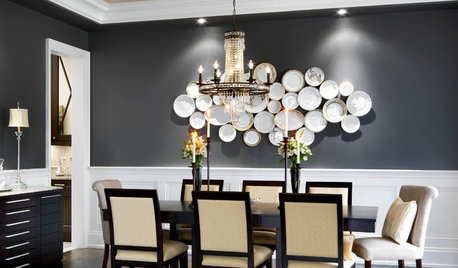

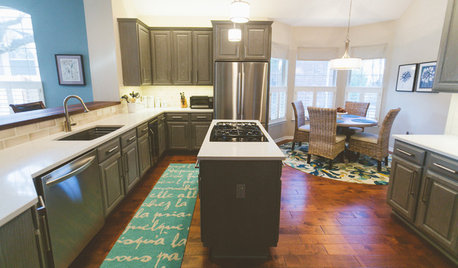
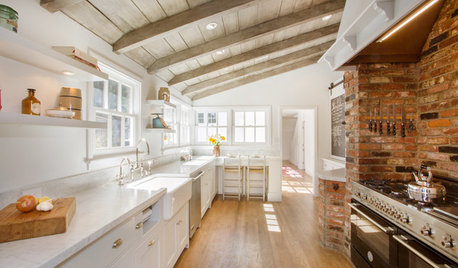
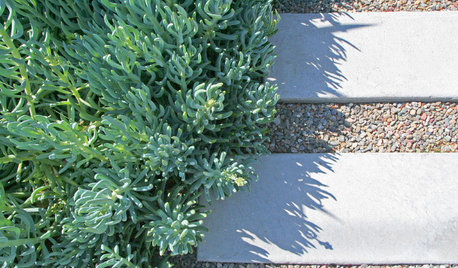
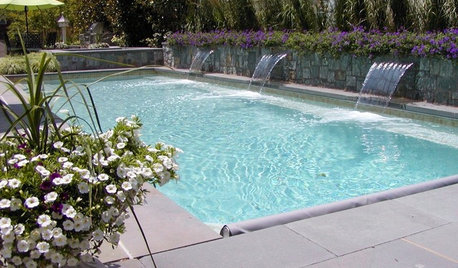


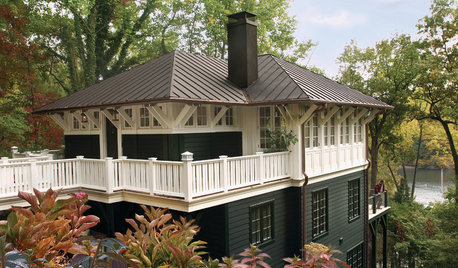








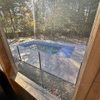

cbinTXOriginal Author